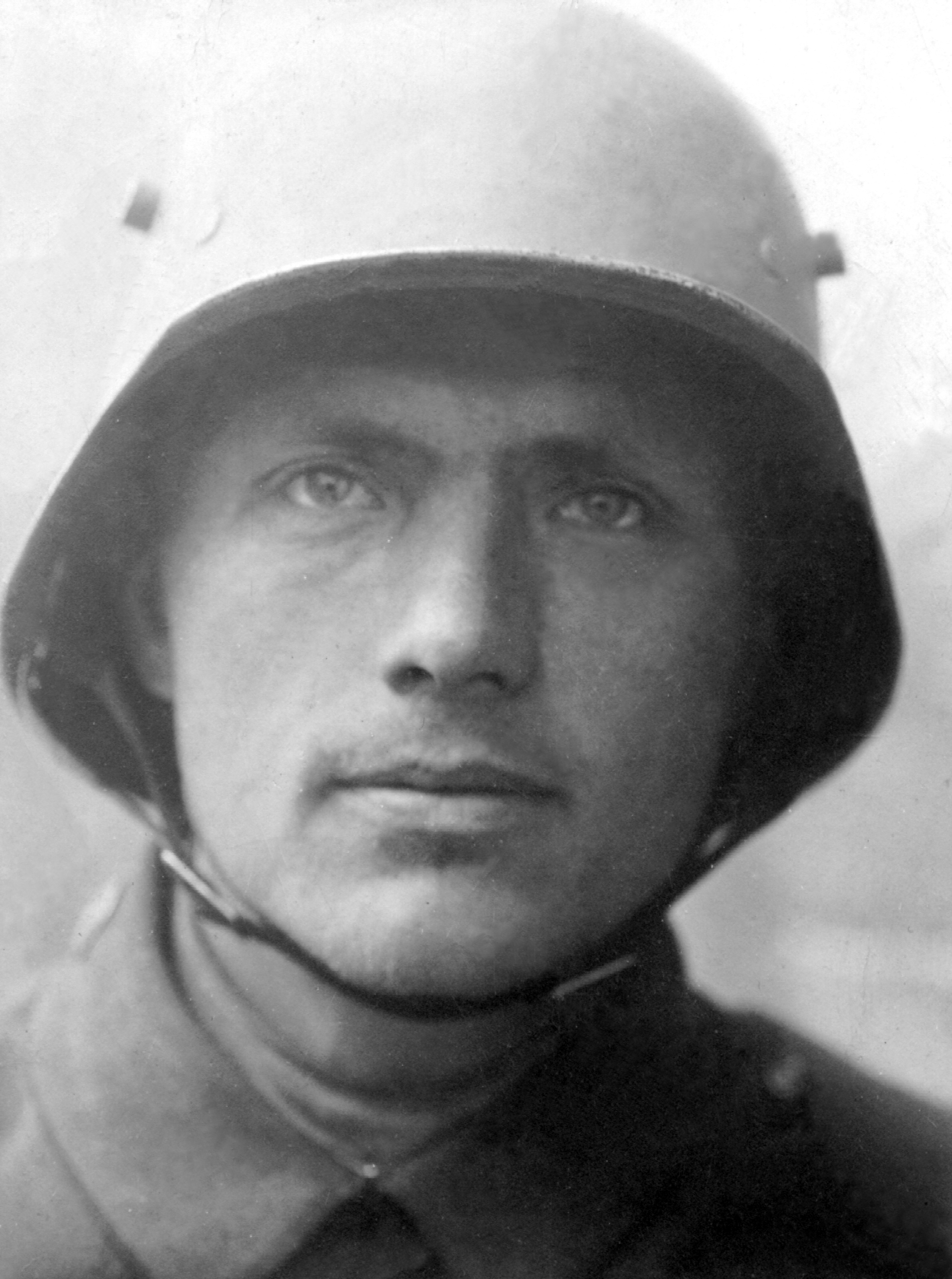Gfr
Mikael Steffensen
Information about birth
|
Date of birth: 26/11/1887 |
|
Place of birth: Hammelev, Sønderjylland., Denmark |
General information
|
Profession: Compositor |
Army information
|
Country: German Empire |
|
Force: Imperial German Army |
|
Rank: Gefreiter |
|
Units: — 4. Kompagnie, I. Battailon, Reserve-Infanterie-Regiment Nr. 84 (Last known unit) |
Information about death
|
Date of death: 28/11/1917 |
|
Place of death: Gheluvelt, Belgium |
|
Cause of death: Killed in action (K.I.A.) |
|
Age: 30 |
Cemetery
|
Hammelev kirkegård Plot: Unknown Row: Unknown Grave: Unknown |
Points of interest 2
| #1 | Place of birth | ||
| #2 | Place of death (approximate) |
My story
Born on 26 November 1887 In southern Jutland's Styding, Hammelev, Mikael Steffensen was the son of Anne Christine and Christen Steffensen, but grew up in a foster family. Mikael was a good gymnast and had an excellent singing voice. He worked as a typographer and graduated from the Royal Veterinary and Agricultural College. He became a consultant for the North Schleswig Joint Association for Rural Affairs. During the Great War, he served with the 84. Reserve Infantry Regiment. Between the end of October 1917 and the end of March 1918, they were in Flanders.
Mikael fell on 28 November 1917, two days after celebrating his 30th birthday. At that time, the regiment was near Geluveld, where they had carried out a raid near the Bassevillebeek on 26 November. Together with a comrade, Mikael had to provide food to the officers in the trenches. His companion was brought back wounded, Mikael followed later. Initially, no wound was noticed on him. However, an autopsy by a doctor revealed that a piece of scraping under his shoulder had pierced his body and hit his heart. Mikael would have died instantly. His comrade clarified that he and Mikael had stopped briefly to rest before they had to start the last and hardest part of their journey. Fate struck and Mikael was found face down on the ground.
Mikael was originally buried in the German military cemetery in the French border town of Halluin. Journalist and editor Jes Sarup travelled towards the West Flanders battlefields in March 1918, just before the start of the Spring Offensive, to repatriate his friend's body. He published his experiences in the book Ved Vestfronten. In late March 1918, four months after Mikael's death, his body was reburied in the local cemetery in Hammelev. Niels Hansen Jacobsen, who designed his gravestone, placed a key message on the back: ‘Let our names die and be forgotten. Like the coral in the deep sea. Like the dead coral, we also help to build. To the growing island in the world to come'.
Mikael fell on 28 November 1917, two days after celebrating his 30th birthday. At that time, the regiment was near Geluveld, where they had carried out a raid near the Bassevillebeek on 26 November. Together with a comrade, Mikael had to provide food to the officers in the trenches. His companion was brought back wounded, Mikael followed later. Initially, no wound was noticed on him. However, an autopsy by a doctor revealed that a piece of scraping under his shoulder had pierced his body and hit his heart. Mikael would have died instantly. His comrade clarified that he and Mikael had stopped briefly to rest before they had to start the last and hardest part of their journey. Fate struck and Mikael was found face down on the ground.
Mikael was originally buried in the German military cemetery in the French border town of Halluin. Journalist and editor Jes Sarup travelled towards the West Flanders battlefields in March 1918, just before the start of the Spring Offensive, to repatriate his friend's body. He published his experiences in the book Ved Vestfronten. In late March 1918, four months after Mikael's death, his body was reburied in the local cemetery in Hammelev. Niels Hansen Jacobsen, who designed his gravestone, placed a key message on the back: ‘Let our names die and be forgotten. Like the coral in the deep sea. Like the dead coral, we also help to build. To the growing island in the world to come'.
Sources 3
|
Sarup, Jes & Rordam, Valdemar. Sønderjyden Mikael Steffensen en af de faldne : Minder og breve (Oslo: H. Aschehoug & Co., 1919). Sources used |
|
Sarup, Jes. Ved Vestfronten: Marts 1918 (s.l., s.d.). Sources used |
|
Speck, William. Das Königlich Preussische Reserve-Infanterie Regiment 84 (Thüringen: Bernhard Sporn Verlag, 1937). Sources used |
More information 1
|
Namenlijst (In Flanders Fields Museum) https://namenlijst.org/publicsearch/#/person/_id=3910fdad-f058-45d3-a562-125aa76e802d |
